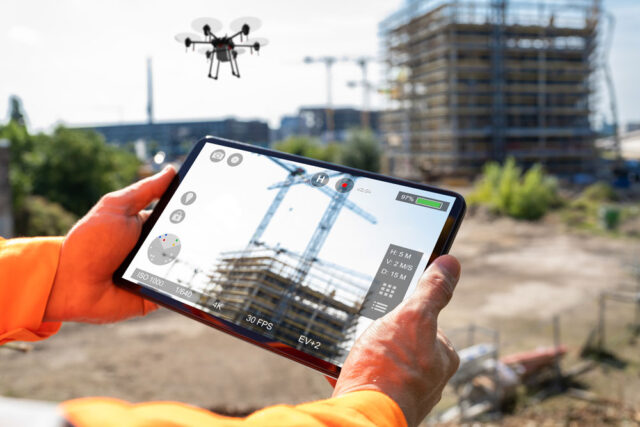In the construction industry, drones are already used for aerial photography, surveying, inspections, and safety and security monitoring. And as unmanned aerial vehicle (UAV) technology continues to advance, so the potential for new applications increases.
“Drones are a key tool in the way we work and the way we will be working in the built environment,” says James Melsom, a landscape architect and a senior lecturer at UTS. “They are relatively cheap and flexible with varied applications in construction, site surveying, and the natural environment – sites which have not yet been developed.”
One key benefit of drones is accessibility. Melsom says using a drone “allows us to go as one person to any site, no matter how remote, and be able to scan it and capture it in various forms – whether that be 3D or heat mapping or infrared if we’re looking at vegetation health and stress within landscape areas, which is particularly crucial in times of the climate crisis – and bring all that data back into the office”.
Another is increased access to data. A drone is essentially “a flying camera, which, in any position, in almost any weather, can capture a site and document it and allow it to be understood and better developed”, says Melsom.
Captured data can be used to generate high-resolution three-dimensional models and high-resolution point clouds, which are “incredibly dense data sets of coloured points” that can be linked to additional information such as GIS or BIM data, Melsom explains.
And he insists that speed is another benefit. A drone can scan a medium-sized site of two to three hectares in 30 minutes. Repeated surveys can be used to create “a temporal model of the development of the project all the way through to completion”, he says.
The rise in UAVs has implications for security and public safety, says Melsom, a registered drone pilot with CASA. “As drones become more ubiquitous … there needs to be strict rules about their use because they can be very disruptive in dense urban environments and even dangerous,” he notes. “It means certain sites are difficult or sometimes even impossible to scan using a drone.” In particular, Melsom highlights areas close to airports and military complexes.
The future of UAV technology
Drones have many potential applications in the construction industry. Melsom can see a future where UAVs supply lighting on construction sites. Lights attached to permanent overhead drones could negate the need for cranes and costly floodlight systems, reducing costs and providing versatility.
Another innovation is the development of ‘heavy-lifting drones’, which can transport materials around a worksite.
A University of Canterbury research project is attempting to design drones to hover with the accuracy of a millimetre or so to use tools.
“Our research will go beyond simple surveying and inspection tasks,” says artificial intelligence expert Professor Richard Green, who is leading the project. “We will build a platform for UAVs to use precision tools in changing dynamic environments, such as outdoors, around hazardous infrastructure like power pylons, or in construction or forestry, without ladders or scaffolding.
“Enabling UAVs to use precision tools is a new technological capability and a radical change in functionality. It will not only transform the way UAVs can be used, but also how and where.”














